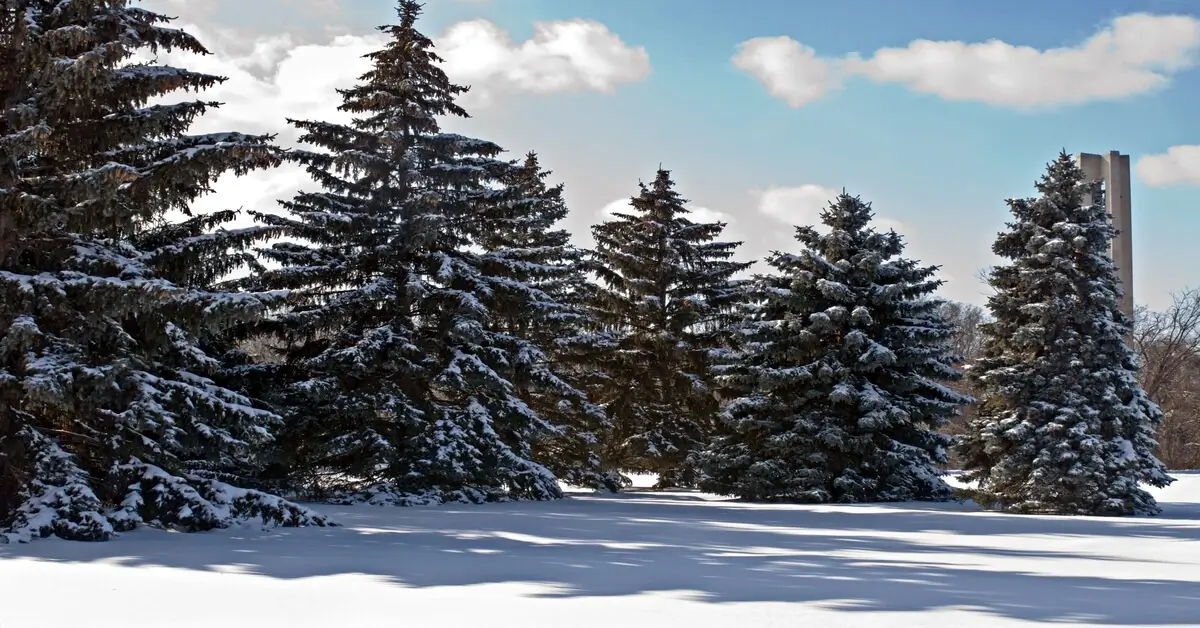When it comes to trees, there’s an array of types to choose from. The two main categories we focus on here are deciduous and evergreen trees. To understand the difference between deciduous and evergreen, we must look at their characteristics, how they adapt to different climates, and how their distinctive features influence tree care.
Understanding Deciduous Trees

As part of deciduous plants, deciduous trees are known for a unique trait – they shed their leaves seasonally. The term ‘deciduous’ is a clue in itself, derived from Latin, meaning “falling off at maturity.” Deciduous trees lose their leaves, typically during the year’s colder months.
They shed their leaves to conserve water during the winter or dry season. This trait means deciduous trees can survive in places with significant seasonal changes. Deciduous trees provide lovely shade in the summer but let sunlight through in winter when most needed.
Examples of deciduous trees include most fruit trees and many kinds of oak, maple, and birch. These trees typically have broad leaves, which they replace each growing season.
What are Evergreen Trees?

In contrast to deciduous species, evergreen trees retain their foliage all year. Whether in the peak of summer or the dead of winter, these trees are always dressed in their leafy finery. This quality gives them their name, as they remain ‘evergreen.’
Evergreen trees can be further divided into broadleaf and coniferous trees. The coniferous trees, also known as coniferous trees, are typically characterized by needle-like leaves or needles and include types like pine, spruce, and fir.
Evergreen trees provide consistent coverage, making them popular for those seeking year-long privacy or windbreaks.
Difference Between Deciduous and Evergreen Trees
While both types of trees provide beauty and ecological benefits, the main difference between deciduous and evergreen trees lies in their adaptation strategies. Deciduous trees shed their leaves to conserve water and survive harsh conditions. On the other hand, Evergreen trees have leaves adapted to resist bad weather conditions, allowing them to perform photosynthesis year-round.
Deciduous trees tend to grow faster than evergreen trees, offering quicker rewards in terms of growth. However, they also tend to be more sensitive to changes in environmental conditions, including temperature and rainfall patterns.
Conversely, evergreen trees grow slower but can withstand a more extensive range of conditions. Evergreen trees prefer climates that remain relatively stable throughout the year.
Deciduous vs. Evergreen Tree Care
Understanding whether trees are deciduous or evergreen can influence tree care decisions, including when to prune. As a rule of thumb, the best time to prune deciduous trees is when they are dormant, usually in late winter or early spring. On the other hand, evergreen trees should be pruned in late summer when they’ve finished their growing season.
Evergreen and deciduous trees also have different soil, water, and sunlight requirements. For instance, many deciduous trees prefer rich, well-drained soil, while evergreen trees often thrive even in poorer-quality soil. Understanding these differences is crucial for proper tree care and maintenance.
Conclusion
Deciduous and evergreen trees bring unique beauty and benefits to our landscapes. Understanding the key differences between these trees allows you to select the right tree for your yard and provide appropriate care to ensure they thrive.
From the dramatic change of leaves in deciduous forests to the constant green coverage of evergreen trees, the choice between deciduous and evergreen can shape the look and feel of your landscape. Whether it’s the continuous color of evergreens or the seasonal drama of deciduous, the choice is all yours.
So, next time you’re selecting a tree or appreciating nature’s beauty, remember the unique traits each tree offers, from the leaves they bear to the climates they prefer, and how each contributes to the wonderful diversity of our ecosystems.

